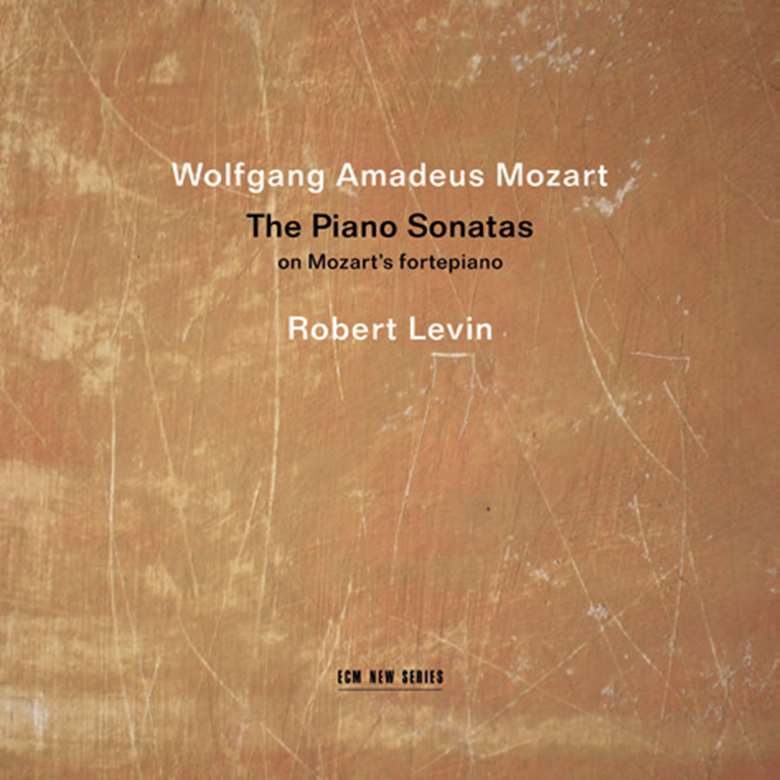Mozart: The Piano Sonatas on Mozart’s fortepiano (Robert Levin)
Benjamin Ivry
Sunday, October 2, 2022
Levin makes imaginative educated guesses based on decades of study

Robert Levin fortepiano
ECM New Series
Recorded in 2017 and 2018 in the large hall of the Salzburg Mozarteum Foundation, these performances are noteworthy for their judicious verve. In 2020, Manhattan’s 92Y advertised a recital of the New York-born pianist by claiming that ‘Robert Levin playing Mozart is as close to Mozart playing Mozart as can be heard’. This may seem like mere hubris, but Levin’s own stance is far more tentative, and the CD booklet notes included here admit that we don’t even quite know how many piano sonatas Mozart wrote.
To cope with uncertainties in ornamentation, tempo, articulation and repeats, Levin makes imaginative educated guesses based on decades of study. In 1959, at age 12, he enrolled in Nadia Boulanger’s Fontainebleau School. This was followed by further on-the-job learning at Philadelphia’s Curtis School of Music, after Boulanger strong-armed Rudolf Serkin, then conservatory director, into hiring the 20-year-old Levin to head the theory department.
The result of this professional trajectory, which later included Harvard and Juilliard, was that Levin can plausibly evoke what Mozart might have expected to hear when his works were played. Manuscript sources of works, often hastily written several at a time, justify Levin’s description of Mozart’s Sonata No 1 in C major K279/189d at a 2005 meeting of the American Academy of Arts and Science as the ‘level of fever that’s going on in Mozart’s imagination’.
On that occasion, Levin also termed the final movement of K279 as an ‘irreverent, absolutely rapscallion romp’ to be played ‘very disrespectfully’ and ‘off-the-cuff’, the way it was devised. Levin’s Mozart scorns porcelain-like decorativeness, instead favouring a ‘manic quality’ that turns listeners’ ‘insides out and tell you something about your own deepest terrors and desires’. While this emotivity may seem very American, it is combined with a deft sense of negotiating transitions from section to section, making points as punctiliously as any student of rhetoric in a public speaking course.
The instrument, created by the noted piano builder Anton Walter and dated to 1782, helps in this endeavour. And so in the Fantasia in C minor K475, the fortepiano and performance express something uncannily otherworldly, like when a churchy countertenor sings the death-obsessed Mozart song Abendempfindung. The spare, skeletal fortepiano sound lends itself to transcendence above the fleshly realm in a way that a plush Hamburg Steinway can do only with difficulty.
To counterbalance this asceticism, at times Levin is so unyieldingly perky and zesty that one wonders if his long experience of striving to keep students awake during lectures has not made him into a relentlessly peppy tour guide. Keyboard lovers in search of the impish Mozart of Peter Shaffer’s play Amadeus will find him here, although necessarily minus the scatology of Wolfie’s letters to his sister. Characterful elements abound, such as a charming childlike naiveté in the Rondo of Sonata No 15 in F major K533/494, like a precursor of Schumann’s Kinderszenen, while the Adagio movement of Sonata No 18 in D major K576 evokes the plaint of a lovelorn swain, like a more eloquent Cherubino.
These performances by no means sweep away previous discographical achievements by Schnabel, Lipatti, Horszowski, Britten, Moravec, Lupu, Perahia and Goode. Instead, they serve as a worthy complement to other approaches. Even those suspicious of the authentic instruments movement should be able to acknowledge the musicality infused in these interpretations. And for three Mozart fragments which he completed, Levin’s input, always plausible and illuminating, is even greater.
For example, the Sonata Movement in B-flat major for Piano K400, an allegro elaborated from the exposition and development sections, was recorded for EMI in the early 1950s by Walter Gieseking in another completion, daintier and less fizzy than Levin’s hectic, urgent, no-frills effort. While more galvanised than Gieseking, the English pianist Anthony Goldstone’s K400 recorded in 2007 is primarily suave and debonair.
Similarly, Levin’s version of the KV312 Movement for a piano sonata in G minor (fragment) is spiky and insouciant, whereas Lili Kraus’ 1954 recording of a different arrangement is entirely more plush and sober. More recently, the Australian pianist Kristian Bezuidenhout’s recording of the Levin completion of KV312 is decorative and dainty, with considerably less emotional impact than when played by Levin himself.
Last year it was announced that two decades after the previous instalment of an acclaimed Mozart concerto series with the Academy of Ancient Music, the final, newly recorded instalments of Levin’s renditions will soon be released. And some 16 years after the hors d’oeuvre of a CD of Mozart sonatas on the Deutsche Harmonia Mundi label, this set appears in time for Levin’s 75th birthday. Both should be cause for celebration among Wolfgangophiles.






